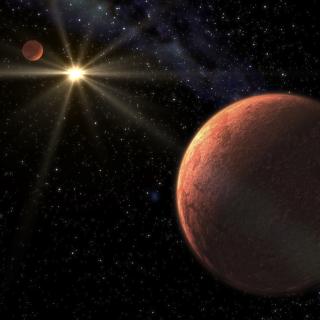Bibcode
Herbst, W.; Hessman, F.; Boudreault, S.; Pintado, O.; Mundt, R.; Rodríguez-Ledesma, M. V.
Referencia bibliográfica
Astronomy and Astrophysics, Volume 551, id.A44, 6 pp.
Fecha de publicación:
3
2013
Revista
Número de citas
5
Número de citas referidas
5
Descripción
Aims: We present the spectroscopic characterization of the
unusual high-amplitude very low mass pre-main-sequence periodic variable
CHS 7797. Methods: This study is based on optical
medium-resolution (R = 2200) spectroscopy in the 6450 - 8600 Å
range, carried out with GMOS-GEMINI -S in March 2011. Observations of
CHS 7797 have been carried out at two distinct phases of the 17.8 d
period, namely at maximum (I ≈ 17.4 mag) and four days before maximum
(I ≈ 18.5 mag). Four different spectral indices were used for the
spectral classification at these two phases, all of them well-suited for
spectral classification of young and obscured late M dwarfs. In
addition, the gravity-sensitive Na I (8183/8195 Å) and K I
(7665/7699 Å) doublet lines were used to confirm the young age of
CHS 7797. Results: From the spectrum obtained at maximum light we
derived a spectral type (SpT) of M 6.05 ± 0.25, while for the
spectrum taken four days before maximum the derived SpT is M 5.75
± 0.25. The derived SpTs confirm that CHS 7797 has a mass in the
stellar-substellar boundary mass range. In addition, the small
differences in the derived SpTs at the two observed phases may provide
indirect hints that CHS 7797 is a binary system of similar mass
components surrounded by a tilted circumbinary disk, a system similar to
KH 15D.
Proyectos relacionados

Estrellas de Baja Masa, Enanas Marrones y Planetas
Se investigan los procesos que conducen a la formación de estrellas de baja masa, enanas marrones y exoplanetas y caracterizar las propiedades físicas de estos astros en varias etapas evolutivas. Las estrellas de muy baja masa y las enanas marrones son probablemente los objetos más numerosos de nuestra Galaxia, pero no por ello están
Rafael
Rebolo López